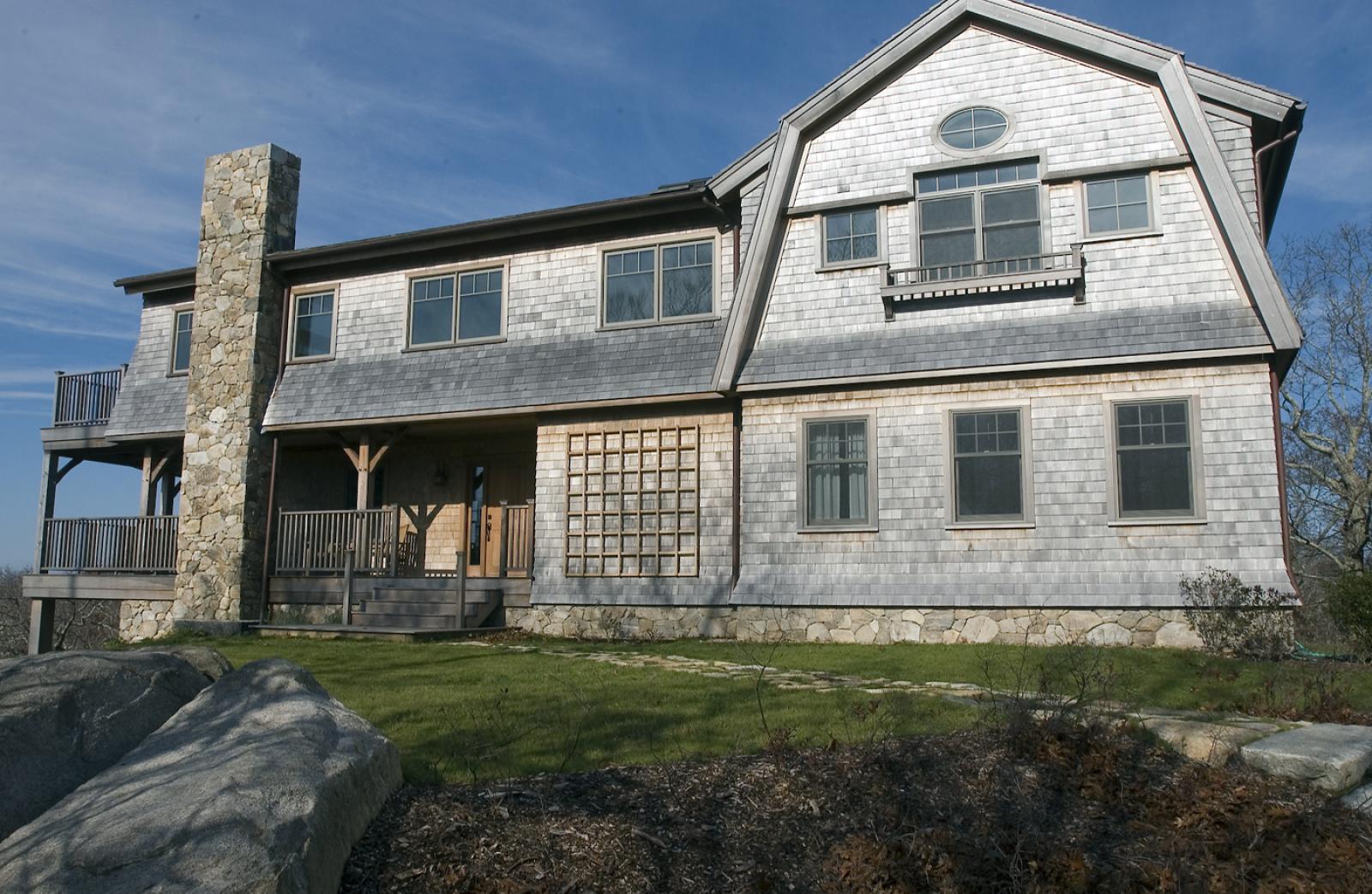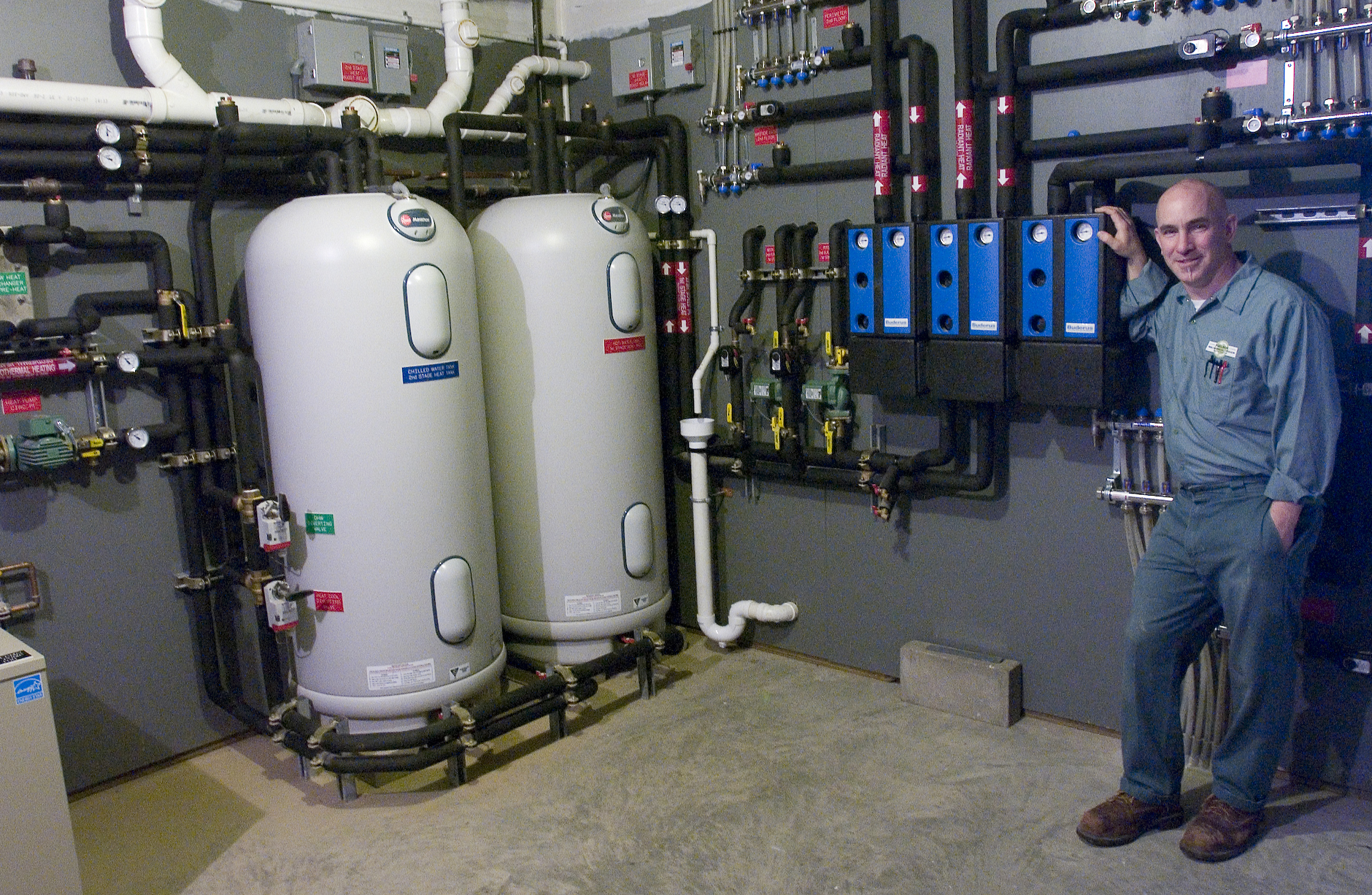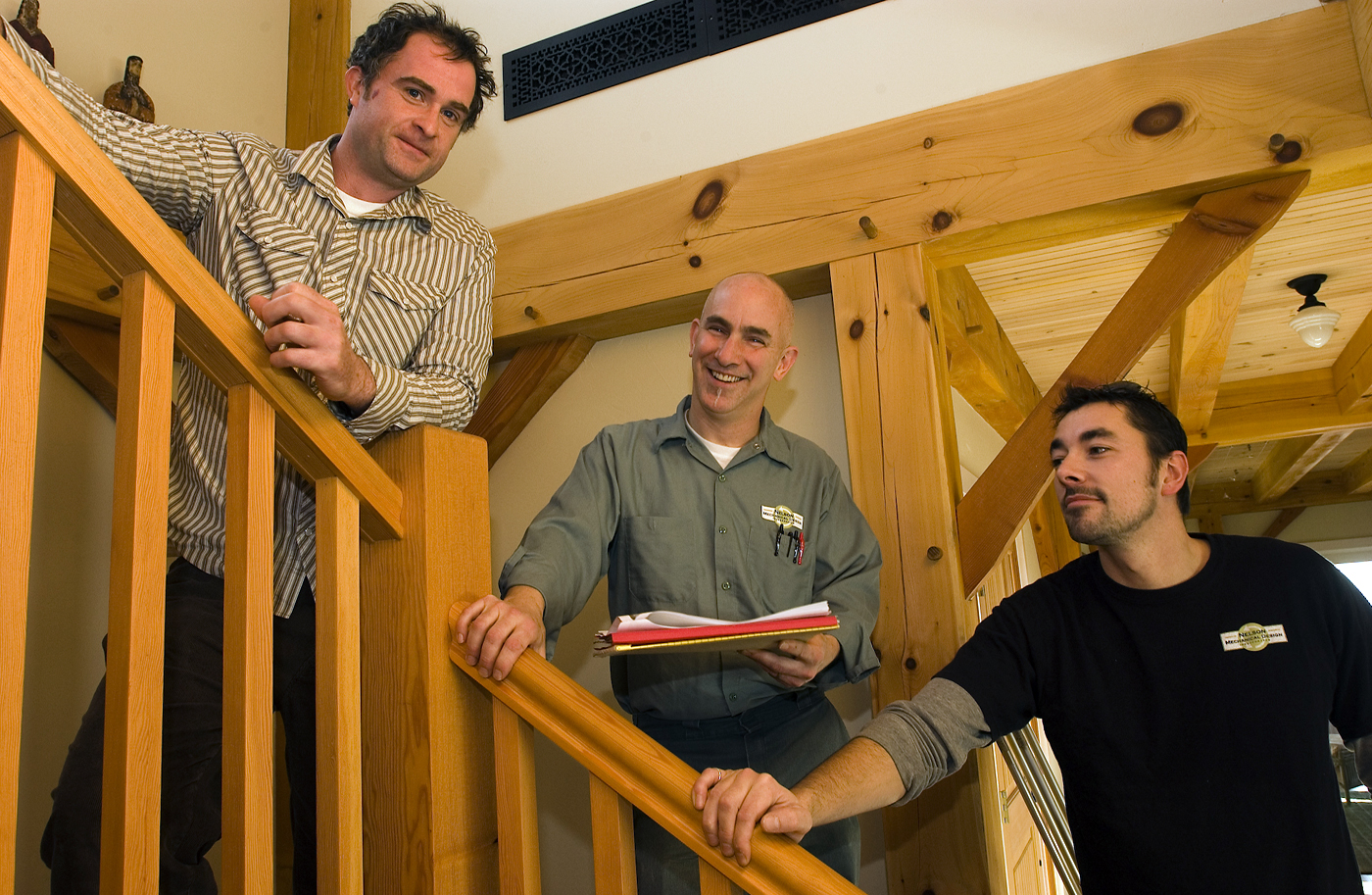Much like President John F. Kennedy’s challenge 50 years ago to beat the Russians to the moon, the green energy movement has tapped into many Americans’ competitive streak.
This competitive spirit is embodied perfectly in the West Tisbury home of Alexander Boyle, which recently won a national award for the most innovative green energy design in the country. The Boyle home was designed by Brian K. Nelson and David Sprague of Nelson Mechanical Design, and was built by general contractor Aaron Zeender.
The home was selected for top honor by the Green Mechanical Council — formed to educate contractors and industry leaders about creating environmentally sound mechanical systems.
During a tour of the Boyle home this week, the three men who designed and built the home — Mr. Nelson, Mr. Sprague and Mr. Zeender — emphasized that Mr. Boyle did not build a green home with any thought of winning an innovative design award.
But they did agree that this inherently competitive American spirit — the same that drives men to build a better mousetrap or design a faster car — will certainly play a role in placing this nation ahead of the green energy curve. “We like a challenge in this country,” Mr. Nelson said. “This time the challenge is not to win an award, but to end our dependence on [fossil fuels] and maybe even save the planet.”
Mr. Nelson explained that the home is powered by an Endurance S-250 wind turbine that was installed by Gary Harcourt, and also boasts a cutting-edge geothermal heating and cooling system. By themselves, neither of these sets the home apart from other green buildings, but the combination of the two, along with other innovations like a direct digital control system, puts this home in a category of its own.
“Having a turbine or a geothermal system alone really is not that impressive. The real innovation comes when you start combining these individual components to create a home that no longer requires gas or oil fuel, one that actually has a negative carbon footprint like this one,” he said.
Mr. Nelson paused to explain this seemingly radical concept of a home that actually creates more energy than it consumes. The Boyle home, he said, does not require gas or oil for energy or heating (although it does use a small amount of propane for the stove), because the electricity generated by the wind turbine is more than enough to power the entire home and the geothermal heating and cooling system.
The home is connected to the NSTAR electrical grid, and generates electricity back into the grid when the house is producing more than it needs. The electric company is required by buy back the electricity at wholesale, Mr. Nelson said, which could be the model for neighborhoods in the future.
“In the future you might see a large central wind turbine. If someone takes the initiative to build a turbine, they have the option to sell back the energy to their neighbors. Or you might see some type of co-op where neighbors share the costs [of building a turbine] and then share in the benefits,” he said.
Mr. Zeender explained that the hilltop site on Longview avenue posed many challenges. Drilling was especially difficult due to the geology of the site — the drill crew encountered 20 feet of sand and enormous boulders left over from the glacier that formed the Island at the end of the last Ice Age, then layers of sand, and then more boulders, he said.
As a result, the bore hole for the geothermal coils was only four inches wide instead of the six or eight inches that are common with a closed loop glycol system, Mr. Zeender said.
The team also had to apply for a variance from the West Tisbury zoning board to build the wind turbine, and there was a lengthy hearing process during which neighbors expressed concerns about noise and aesthetics. To appease the neighbors, Mr. Harcourt took photos showing where the shadow from the turbine would fall and presented data indicating it would make no more noise than a person rubbing her hands together rapidly.
After reassuring residents that the turbine would be fairly quiet, even with the windy conditions at the site, the board unanimously voted to grant a variance to allow the turbine.
Despite these difficulties, the team of designers and builders this week were clearly proud — and at times even playful — during the tour of the award-winning home they helped build.
When the tour arrived in the basement, Mr. Zeender looked over all the strange-looking meters, switches and cooling tanks and said, “We forget to tell you this house can fly . . . it can actually fly.”
And from the look of the gadgets and gizmos, it was not much of a stretch to think the home could, with the push of a button, pull up and rumble from its earthly mooring.
But this home is firmly planted in the ground with a root system of pipes and coils that carry water under the surface of the earth where the temperature hovers around 50 degrees throughout the year.
Mr. Nelson explained that a heat pump is used to harvest low-grade energy stored under the ground; it is a relatively simple system that already is used in most food refrigerators and air conditioners. The heat pump system uses the constant temperature of the earth to heat, or cool, the home.
In the middle of explaining how the heat pump works, Mr. Nelson spontaneously walked over to the mechanical box and gave it a hug. “This is what makes the whole thing work, the heat pump,” he said tenderly. “This is where the love is.”
Continuing with the lesson, he explained that water circulated through the tubing underground is then concentrated into the heat pump, which uses a high-powered air compressor to concentrate the low-grade energy from the earth to either heat or cool the water.
“A perfect example is a bike pump,” Mr. Nelson explained. “You have ambient air that is 60 degrees, and when you pump in the air it heats up.”
“You have this huge mass of low-grade energy and you concentrate it to a smaller mass of high-grade energy,” Mr. Sprague joined in. “Either you’re grabbing the heat out of the ground or you are taking the warm air of the house and pushing it back into the ground.”
Mr. Sprague did a lot of research when designing the Boyle home and found that heat pump systems were more prevalent in the 1930s and 1940s but were phased out when the nation became more dependent on fossil fuels. Now that the cost of oil and gas is on the rise, both men said they expect the country to again embrace heat pump systems.
“Coal and oil were cheap back then, so there was no incentive to continue [with heat pumps]; things like oil burners were just easier. If they weren’t going to save money they weren’t going to invest in those systems; that’s just the American way. But you’re going to see that change in the coming years,” he said.
Mr. Zeender said he already has seen that change. “The first thing they ask about is green energy . . . I hear the saying a lot now, ‘Either go green or go out of business,’” he said.
Although clearly excited about taking first prize for innovation in the Green Mechanical Awards, Mr. Nelson and Mr. Sprague are not pausing too long to pat themselves on the back. They already are busy with several other net zero energy projects and will continue to set the bar high for green energy — not to win awards, but to educate the public and improve the environment one home at a time.
“I think years from now we will look back and say, ‘Why weren’t we doing this sooner?’ These projects cost more, but they more than pay for themselves in five years or less. Remember, the sun won’t send you a bill . . . it will provide free energy for your home for millions of years. Why wouldn’t you tap in? The energy down there is free,” he said.







Comments (4)
Comments
Comment policy »